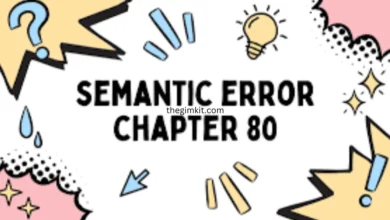How Federal Grants Support Education and Research

Federal grants are a vital source of funding that stimulates innovation, improves educational opportunities, and tackles social issues. They are a cornerstone of educational and scientific growth in the United States. These subsidies, which several government organizations give out, are essential in ensuring that colleges, universities, research centers, and schools have the means to provide cutting-edge instruction and innovative research. Federal grants support various initiatives and programs that close the achievement gap and advance scientific advancements that advance public health, economic growth, and national security. This introduction will examine how federal funds support the nation’s research landscape and educational system, emphasizing their importance in promoting advancement and tackling urgent problems.
Support for Education:
The United States educational system is made better and more accessible thanks mainly to federal grants. These awards are intended to support students from various backgrounds at different stages of the educational process, from early childhood education to higher education. An outline of how government funding helps with education is provided below:
K-12 Education
- Title I Grants:
Purpose: Title I grants aim to improve educational opportunities for disadvantaged students.
Impact: They provide additional funding to schools with high percentages of low-income students, helping to close the achievement gap by offering extra instructional services, after-school programs, and summer school.
- Special Education Grants (IDEA):
Purpose: Under the Individuals with Disabilities Education Act (IDEA), these grants support special education services for children with disabilities.
Impact: They ensure that students with disabilities receive a free and appropriate public education in the least restrictive environment, supporting services like speech therapy, occupational therapy, and personalized educational plans.
- Teacher Quality Grants:
Purpose: These grants focus on improving teacher quality and effectiveness.
Impact: They fund professional development, recruitment, and retention programs for teachers, helping to ensure that all students have access to highly qualified educators.
Higher Education

- Pell Grants:
Purpose: Pell Grants provide financial aid to low-income undergraduate students.
Impact: They help students afford tuition, fees, and other college expenses, increasing access to higher education for those who might otherwise be unable to attend.
- Federal Work-Study Program:
Purpose: This program offers part-time employment to undergraduate and graduate students with financial needs.
Impact: It allows students to earn money to help pay for their education expenses while gaining valuable work experience.
- TRIO Programs:
Purpose: TRIO programs, including Upward Bound and Talent Search, support low-income, first-generation college students and students with disabilities.
Impact: These programs help students prepare for and succeed in higher education through services like tutoring, counseling, mentoring, and financial literacy education.
Adult and Career Education
- Adult Education and Family Literacy Act (AEFLA) Grants:
Purpose: These grants support programs that help adults gain basic education skills, complete secondary education, and transition to postsecondary education or employment.
Impact: They improve the literacy, numeracy, and employability skills of adults, contributing to workforce development and economic self-sufficiency.
- Career and Technical Education (CTE) Grants:
Purpose: Funded under the Perkins Act, CTE grants support career and technical education programs at high schools and postsecondary institutions.
Impact: They enhance the quality of technical education, aligning training with current industry standards and workforce needs.
Support for Research
Federal funding is essential to advance scientific knowledge and innovation in a wide range of sectors. They enable academic institutions, research centers, and commercial businesses to conduct ground-breaking research that advances society and tackles pressing issues. An outline of how government funds fund research is provided below:
- National Institutes of Health (NIH):
Purpose: NIH grants fund biomedical and health-related research aimed at understanding, preventing, and treating diseases.
Impact: These grants support research on various topics, including cancer, genetics, infectious diseases, and mental health. NIH funding has led to significant medical breakthroughs, improved patient care, and advancements in public health.
- National Science Foundation (NSF):
Purpose: NSF grants support research and education in all fields of science and engineering.
Impact: NSF funding promotes fundamental research, interdisciplinary projects, and innovative educational programs. This support helps to foster scientific discoveries, technological advancements, and the development of a highly skilled STEM workforce.
- Department of Energy (DOE):
Purpose: DOE grants fund research in energy-related fields, including renewable energy, nuclear energy, and advanced scientific computing.
Impact: These grants support basic and applied research, leading to advancements in energy technologies, improved energy efficiency, and a better understanding of environmental impacts. DOE-funded research contributes to national energy security and sustainability.
- National Aeronautics and Space Administration (NASA):
Purpose: NASA grants fund research related to space exploration, aeronautics, and space science.
Impact: NASA funding supports projects at universities, research institutions, and industry partners that drive innovations in space technology, enhance our understanding of the universe, and develop new materials and technologies with broad applications.
- Department of Defense (DOD):
Purpose: DOD grants fund research in areas relevant to national security, including advanced materials, cybersecurity, and medical research.
Impact: These grants support the development of cutting-edge technologies and solutions that enhance national defense capabilities. DOD-funded research also contributes to medical advancements that benefit military and civilian populations.
- National Endowment for the Humanities (NEH) and National Endowment for the Arts (NEA)
Purpose: NEH and NEA grants fund research and projects in the humanities and arts.
Impact: These grants support scholarly research, preservation of cultural heritage, and innovative artistic projects. They enrich public understanding of history, culture, and the arts, fostering a more informed and culturally aware society.
- Broader Impact of Federal Research Grants:
Advancement of Knowledge: Federal grants enable researchers to pursue innovative projects that expand scientific understanding and address critical challenges.
Economic Development: Research funded by federal grants can lead to new technologies, products, and industries, driving economic growth and job creation.
Public Health and Safety: Grants support research that improves public health, safety, and environmental protection.
Education and Workforce Development: Grants support training and educational programs that develop the next generation of scientists, engineers, and professionals in various fields.
Collaboration and Innovation: Federal grants often promote collaboration between institutions, fostering a multidisciplinary approach to problem-solving and innovation.
Conclusion
Federal funding is necessary to keep the US at the forefront of research and education. They give the money required to fund programs that help people individually, in their communities, and throughout society.




